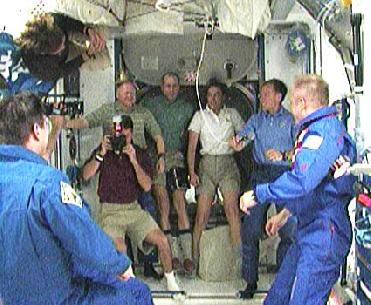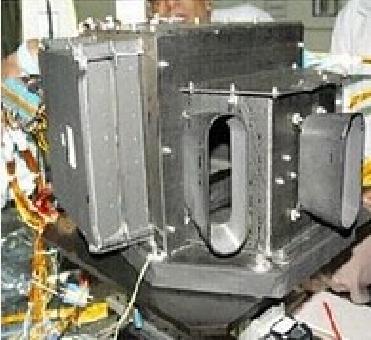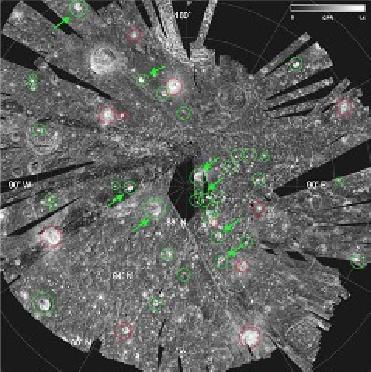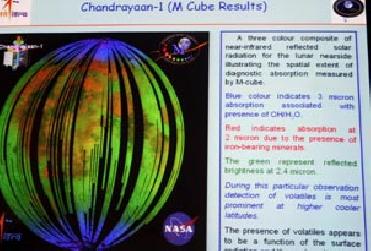
This is the picture of moon's surface taken from lunar orbit by Chandrayaan-1 spacecraft's Terrain Mapping Camera (TMC) on November 13, 2008. Taken over the equatorial region of the moon, the picture shows the uneven surface of the moon with numerous craters. On the lower left, part of the Torricelli crater is seen. ISRO photo
BANGALORE (BNS): The fourth of the 11 scientific instruments on Chandrayaan-1, the Lunar Laser Ranging Instrument (LLRI), was successfully switched on Sunday.
India�s unmanned spacecraft Chandrayaan-1 is nestled nicely in the desired orbit around the moon and has begun conducting science flashing high resolution pictures of the moon�s surface.
According to Indian Space Research Organisation (ISRO), the LLRI instrument was switched on when the spacecraft was passing over the western part of the Moon's visible hemisphere. Preliminary assessment of the data from LLRI by ISRO scientists indicates that the instrument's performance is normal. LLRI sends pulses of infrared laser light towards a strip of lunar surface and detects the reflected portion of that light, ISRO said, adding that with this, the instrument can very accurately measure the height of Moon's surface features.
ISRO said that LLRI will be continuously kept on and will take 10 measurements per second on both day and night sides of the Moon. It will also provide topographical details of both polar and equatorial regions of the Moon. Detailed analysis of the data sent by LLRI helps in understanding the internal structure of the Moon as well as the way the celestial body evolved.
It may be recalled that earlier, three other payloads of Chandrayaan-1 � Terrain Mapping Camera (TMC), Radiation Dose Monitor (RADOM) and Moon Impact Probe (MIP) � were successfully turned on. MIP, carrying Indian tricolour, was released from the spacecraft on November 14, 2008 and 25 minutes later, successfully impacted the lunar surface as intended. TMC took pictures of the Earth and Moon when the spacecraft was on its way to Moon. After reaching lunar orbit, TMC has been taking breathtaking pictures of the lunar panorama. The RADOM was also switched on in the Earth orbit itself.
The Indian Deep Space Network (IDSN) at Byalalu has been receiving the pictures and other scientific data sent by Chandrayaan-1 spacecraft from the lunar orbit. The spacecraft operations are being carried out from the Satellite Control Centre (SCC) of ISRO Telemetry, Tracking and Command Network (ISTRAC) at Bangalore.
 Previous Article
Previous Article Next Article
Next Article













The Indian Air Force, in its flight trials evaluation report submitted before the Defence Ministry l..
view articleAn insight into the Medium Multi-Role Combat Aircraft competition...
view articleSky enthusiasts can now spot the International Space Station (ISS) commanded by Indian-American astr..
view article